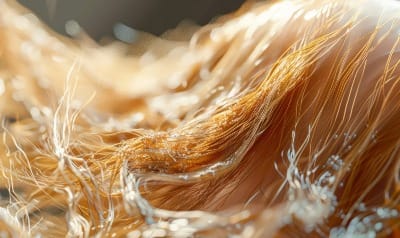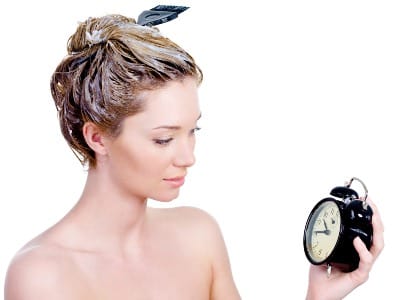Coloring your hair is a fun and expressive way to change your look, but it’s essential to do it safely to avoid damaging your hair and scalp.
Many hair treatments, including coloring, can lead to dry, brittle hair if not done correctly.
Additionally, allergic reactions to hair dyes, particularly those containing para-phenylenediamine (PPD), can occur, making patch testing crucial to avoid them.
Bleach can also cause significant damage, so understanding how to care for bleach damaged hair is important.
Here’s a guide to help you color your hair while keeping it healthy and strong.

1. Try to Stay Within Your Natural Range
One of the simplest ways to minimize damage when coloring your hair is to stay close to your natural shade.
Matching hair color choices to your skin tone is also crucial for natural-looking results. Ideally, choose a color that is within three shades of your natural hair color. This is particularly important when lightening your hair.

Going more than three shades lighter requires stronger chemicals, such as higher volumes of peroxide, which can strip your hair of its natural moisture and lead to significant damage.

Permanent hair dyes often contain PPD, a common coloring agent that can cause allergic reactions and is found in nearly all permanent hair dyes as well as many demi-permanent and semi-permanent products.
If you’re looking to experiment, consider going darker rather than lighter. Darker shades generally require less harsh chemicals and can be less damaging over time.
2. ALWAYS Perform a Hair Dye Patch Test Before Applying Color
Before applying any hair dye, especially if you’re using a store-bought product, it’s crucial to perform a patch test.

This involves applying a small amount of the dye to your skin, typically behind your ear or on your inner elbow, and waiting 48 hours to check for any reactions.
Patch testing is essential to diagnose hair dye allergies and prevent severe allergic reactions.
If you notice redness, swelling, itching, or a rash, do not proceed with the dyeing process. These symptoms indicate an allergic reaction, and you should consult a dermatologist before using any hair dye.

Hair dye allergy is quite common, with around 38% of individuals who color their hair experiencing allergic reactions, primarily contact dermatitis. For severe reactions, seeking medical advice is crucial. Your dermatologist may suggest allergy testing to pinpoint the specific ingredient causing the reaction.

3. Protect Your Hair From the Sun
Sun exposure can weaken your hair, making it dry, rough, and brittle. This effect is amplified if you have colored hair, as dyed hair is more susceptible to sun damage.

To protect your hair from the sun’s damaging rays, wear a wide-brimmed hat when you’re outdoors, especially during peak sunlight hours.

Additionally, consider using hair products that contain UV filters to provide an extra layer of protection.

4. Be Cautious With Chemical Treatments
Chemical treatments like perming, bleaching, and straightening can be particularly harsh on your hair.

If you have long or thick hair, it is advisable to purchase extra dye/perming solution to ensure full coverage and avoid running out during the application process. This avoids you needing to have a second treatment and therefore causing excessive damage to the semi-treated hair. If you decide to have it done once - have it done right the first time to avoid unnecessary additional treatments.
When performing these treatments, follow the instructions meticulously. Keep your hair loose during the dyeing process to ensure even coverage and avoid tying it up after applying the dye.
If you’re perming your hair, set a timer to ensure you don’t leave the solution on for too long, as this can cause lasting damage to your hair.

If you experience excessive stinging or burning during the process, rinse the product out immediately and consult a dermatologist.
5. Condition Regularly & Deep Condition Monthly
Color-treated hair needs extra care to maintain its health and luster.
Regular conditioning after each wash helps to restore some of the moisture lost during the coloring process.

Additionally, incorporate a deep conditioner into your routine at least once a month. Deep conditioners penetrate the hair shaft more effectively than regular conditioners, providing more intense hydration and helping to repair any damage caused by coloring.

6. Limit Heat Styling
Heat styling tools like flat irons, curling irons, and blow dryers can exacerbate the dryness and brittleness caused by hair dye.

If possible, limit the use of these tools, and when you do use them, apply a heat protectant spray to minimize damage.
Allow your hair to air dry when you can, and opt for heat-free styling methods like braiding or using overnight hair rollers.

7. Use Sulfate-Free Shampoos
Sulfates are harsh detergents found in many shampoos that can strip your hair of its natural oils, leading to dryness.
For color-treated hair, using a sulfate-free shampoo can help preserve your color and keep your hair hydrated. Sulfate-free shampoos are gentler on the hair and scalp, helping to extend the life of your hair color and prevent unnecessary damage.

8. Trim Regularly to Avoid Split Ends
Even with the best care, color-treated hair can develop split ends.
Regular trims every 6-8 weeks help prevent split ends from traveling up the hair shaft, which can cause more significant damage. Keeping your ends healthy will also make your hair look fuller and more vibrant.

The Bottom Line on Coloring Hair Without Damage...
Coloring your hair doesn’t have to mean compromising its health.
It is important to ensure you do not have a PPD hair dye allergy to avoid a potential severe reaction.
By choosing a shade close to your natural color, performing a patch test, protecting your hair from the sun, and following these additional tips, you can enjoy beautiful, vibrant hair while keeping it strong and healthy.

Always consult with a dermatologist if you experience any adverse reactions, and remember that taking care of your hair is just as important as how you choose to style it.




